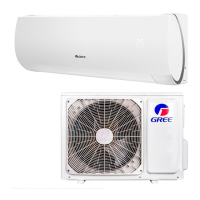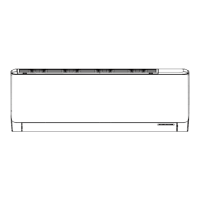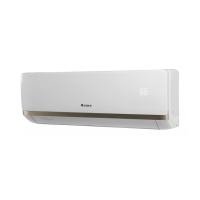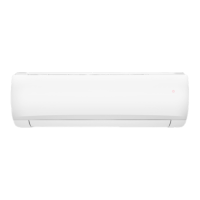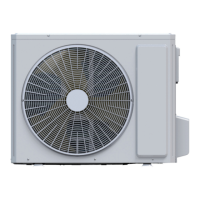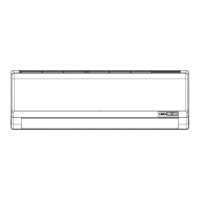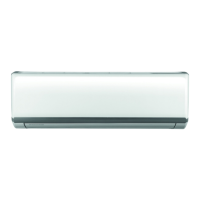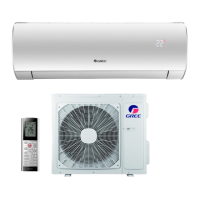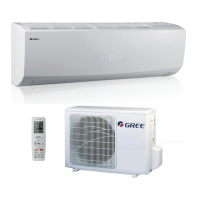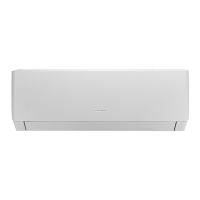85
Installation and Maintenance
Service Manual
● purge with inert gas;
● open the circuit by cutting or brazing.
The refrigerant charge shall be recovered into the correct
recovery cylinders. For appliances containing flammable
refrigerants, the system shall be "flushed" with OFN to
render the unit safe. This process may need to be repeated
several times. Compressed air or oxygen shall not be used
for purging refrigerant systems.
For appliances containing flammable refrigerants, flushing
shall be achieved by breaking the vacuum in the system
with OFN and continuing to fill until the working pressure
is achieved, then venting to atmosphere, and nally pulling
down to a vacuum. This process shall be repeated until no
refrigerant is within the system. When the nal OFN charge
is used, the system shall be vented down to atmospheric
pressure to enable work to take place. This operation is
absolutely vital if brazing operations on the pipe-work are to
take place.
Ensure that the outlet for the vacuum pump is not close to
any ignition sources and that ventilation is available.
● Charging procedures
In addition to conventional charging procedures, the
following requirements shall be followed.
● Ensure that contamination of different refrigerants does
not occur when using charging equipment. Hoses or lines
shall be as short as possible to minimise the amount of
refrigerant contained in them.
● Cylinders shall be kept in an appropriate position
according to the instructions.
● Ensure that the refrigerating system is earthed prior to
charging the system with refrigerant.
● Label the system when charging is complete (if not
already).
● Extreme care shall be taken not to overll the refrigerating
system.
Prior to recharging the system, it shall be pressure-tested
with the appropriate purging gas. The system shall be leak-
tested on completion of charging but prior to commissioning.
A follow up leak test shall be carried out prior to leaving the
site.
● Decommissioning
Before carrying out this procedure, it is essential that
the technician is completely familiar with the equipment
and all its detail. It is recommended good practice that all
refrigerants are recovered safely. Prior to the task being
carried out, an oil and refrigerant sample shall be taken
in case analysis is required prior to re-use of recovered
refrigerant. It is essential that electrical power is available
before the task is commenced.
a) Become familiar with the equipment and its operation.
b) Isolate system electrically.
c) Before attempting the procedure, ensure that:
— mechanical handling equipment is available, if required,
for handling refrigerant cylinders;
— all personal protective equipment is available and being
used correctly;
— the recovery process is supervised at all times by a
competent person;
— recovery equipment and cylinders conform to the
appropriate standards.
d) Pump down refrigerant system, if possible.
e) If a vacuum is not possible, make a manifold so that
refrigerant can be removed from various parts of the system.
f) Make sure that cylinder is situated on the scales before
recovery takes place.
g) Start the recovery machine and operate in accordance with
manufacturer's instructions.
h) Do not overll cylinders. (No more than 80% volume liquid
charge).
i) Do not exceed the maximum working pressure of the
cylinder, even temporarily.
j) When the cylinders have been filled correctly and the
process completed, make sure that the cylinders and the
equipment are removed from site promptly and all isolation
valves on the equipment are closed off.
k) Recovered refrigerant shall not be charged into another
refrigerating system unless it has been cleaned and checked.
● Labelling
Equipment shall be labelled stating that it has been de-
commissioned and emptied of refrigerant. The label shall
be dated and signed. For appliances containing flammable
refrigerants, ensure that there are labels on the equipment
stating the equipment contains ammable refrigerant.
● Recovery
When removing refrigerant from a system, either for servicing
or decommissioning, it is recommended good practice that
all refrigerants are removed safely.

